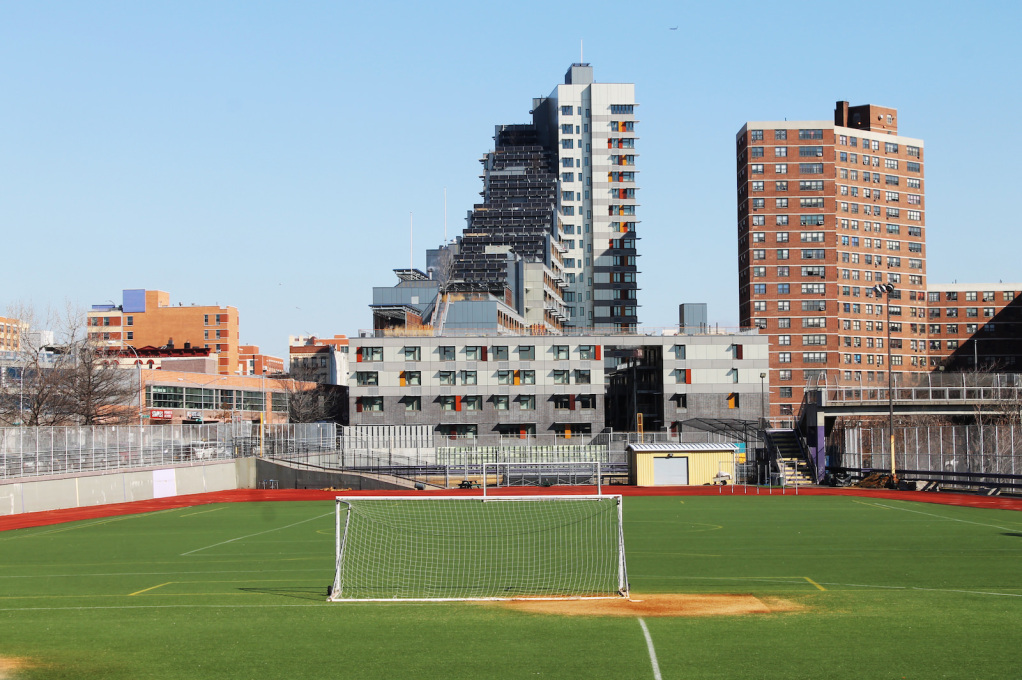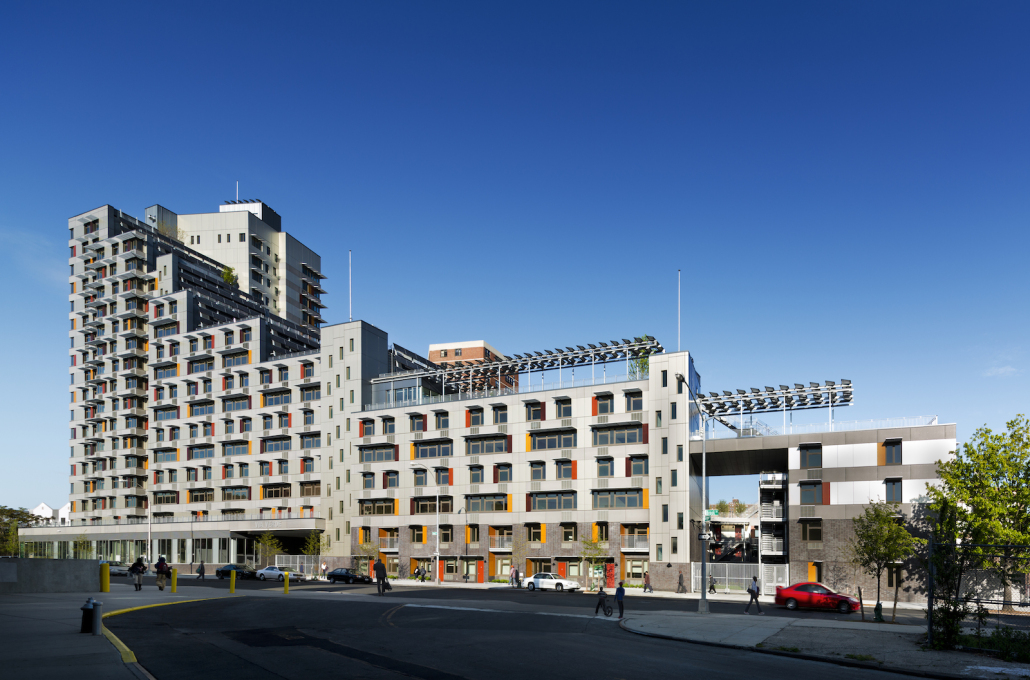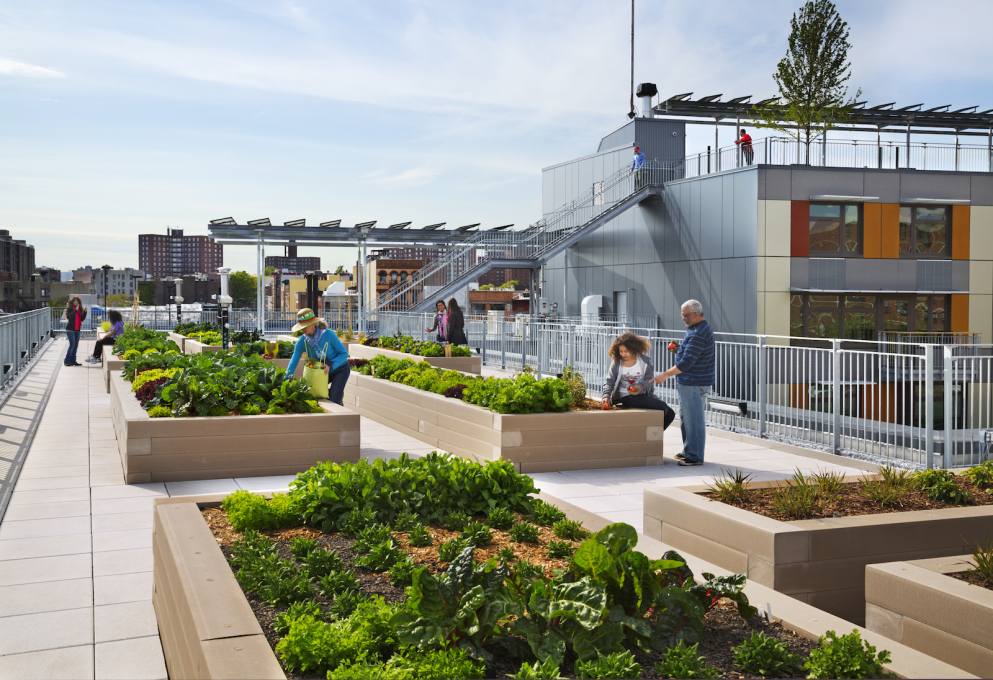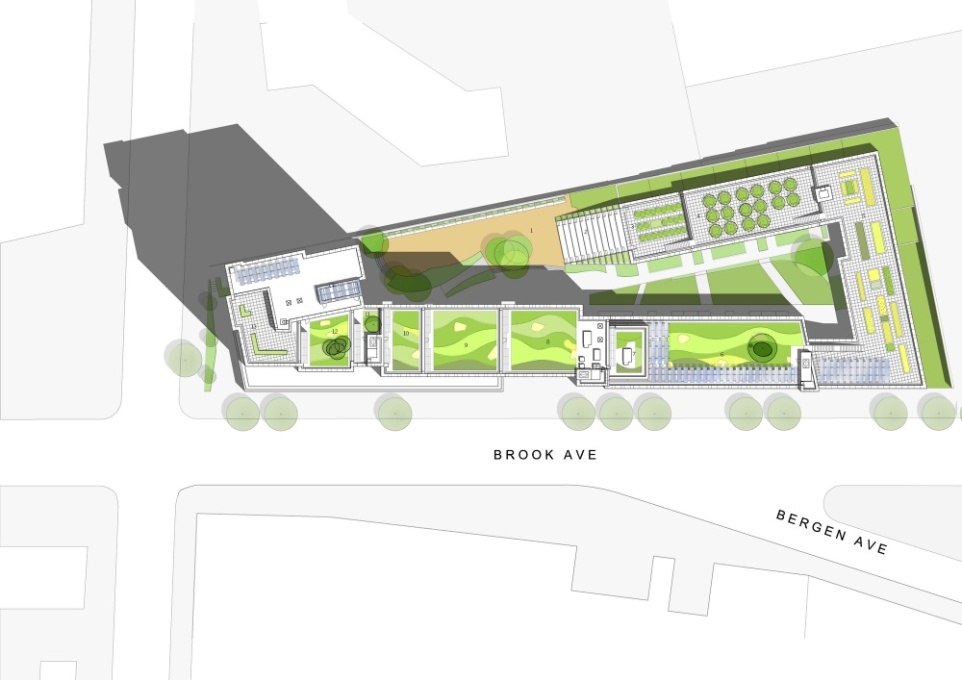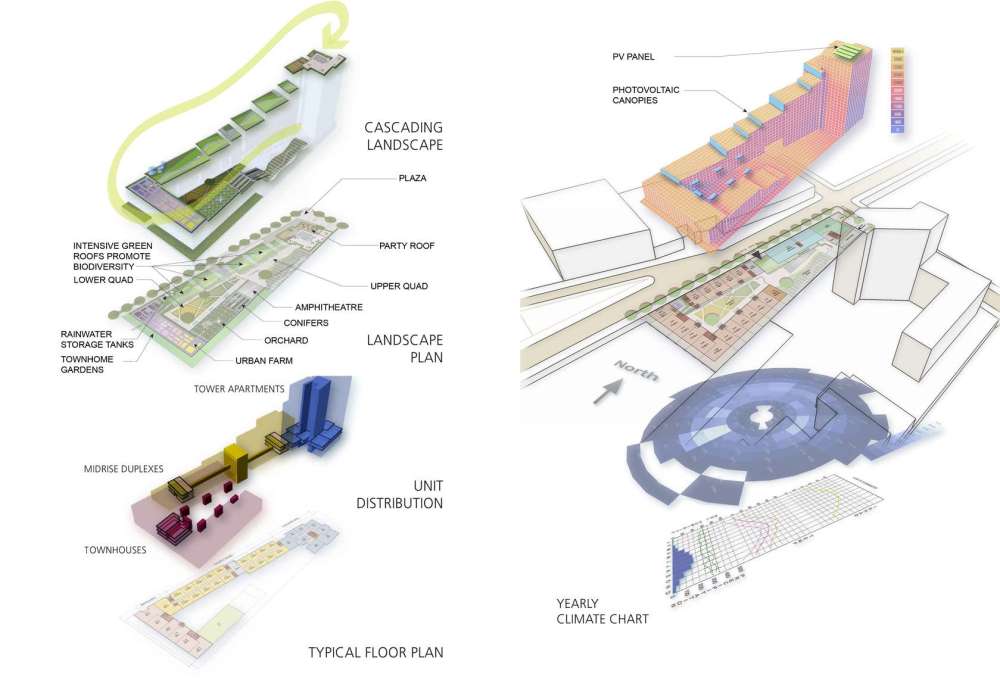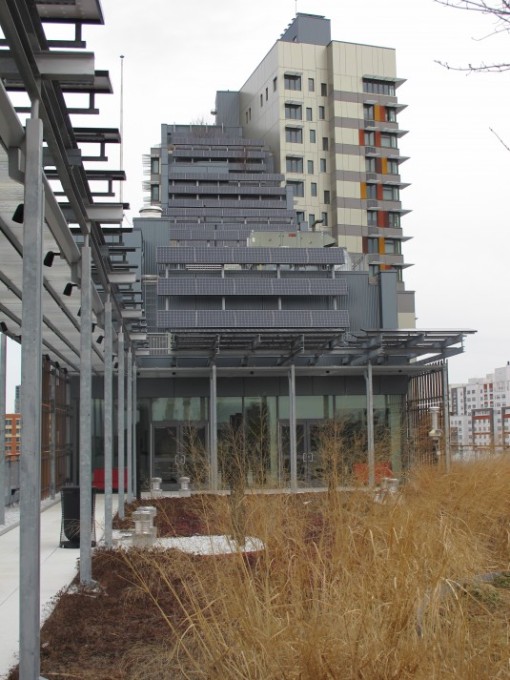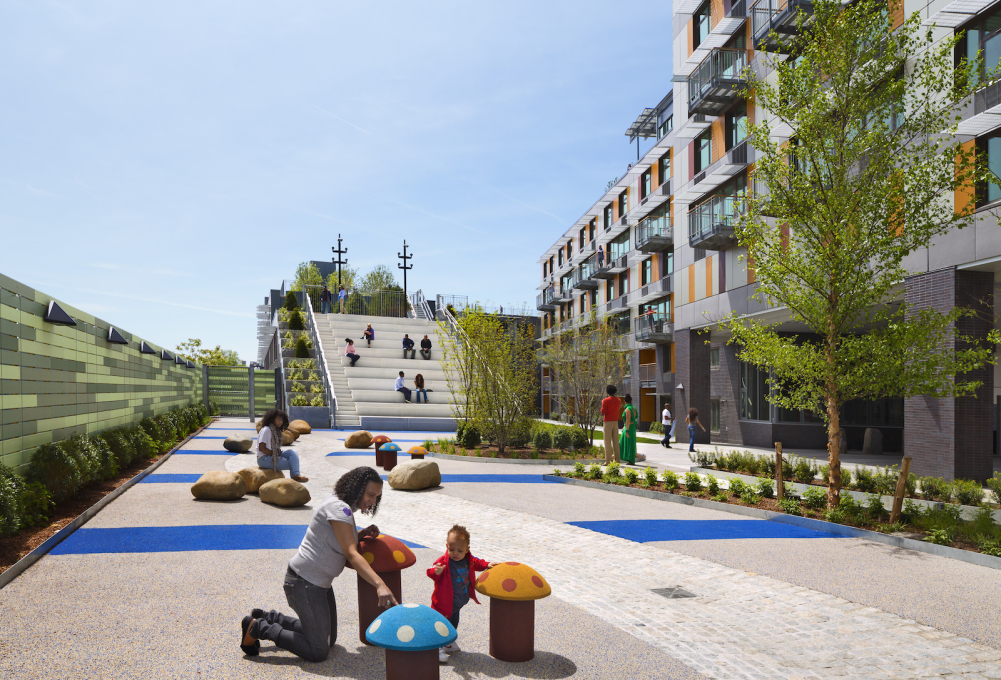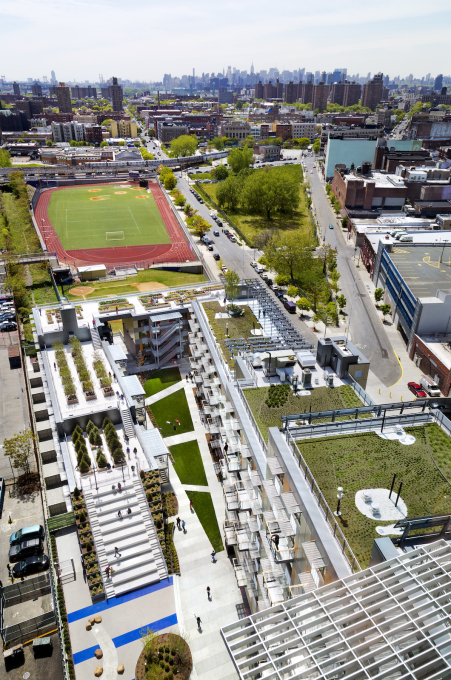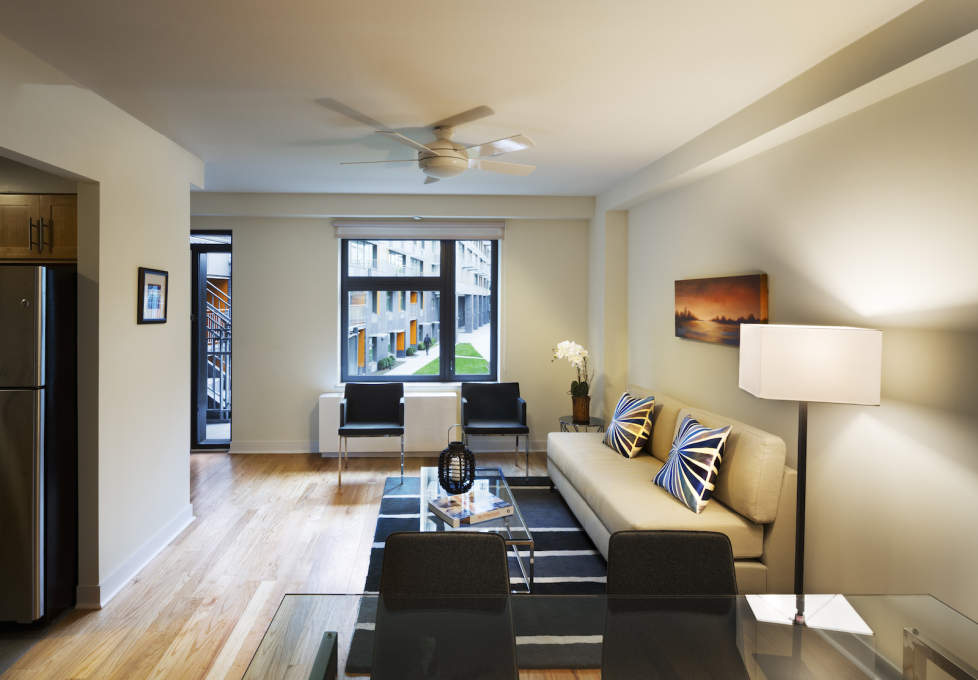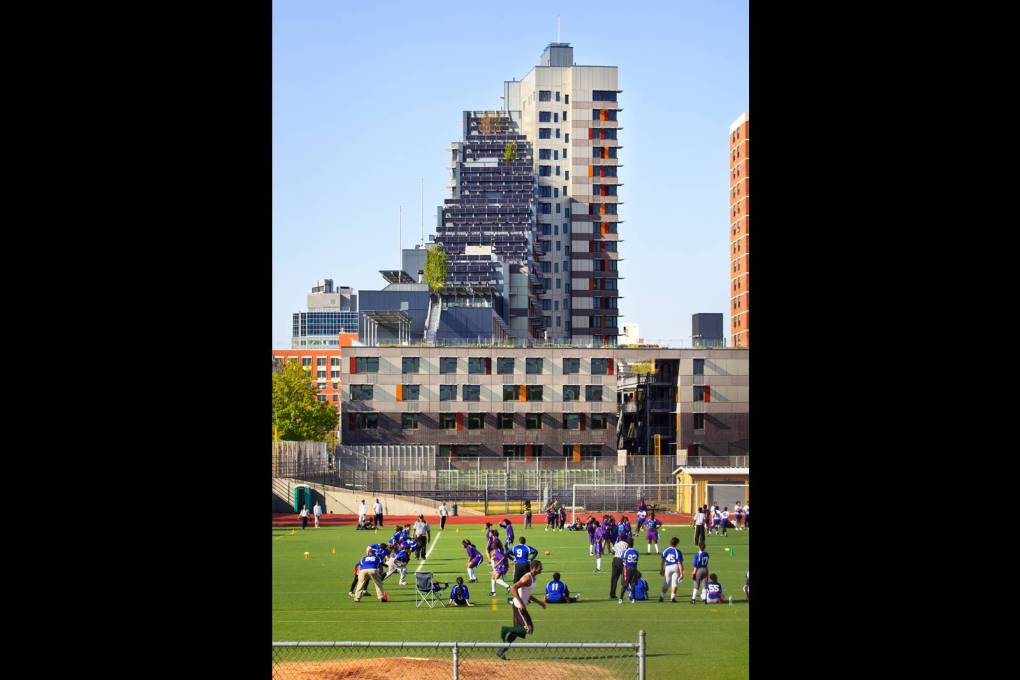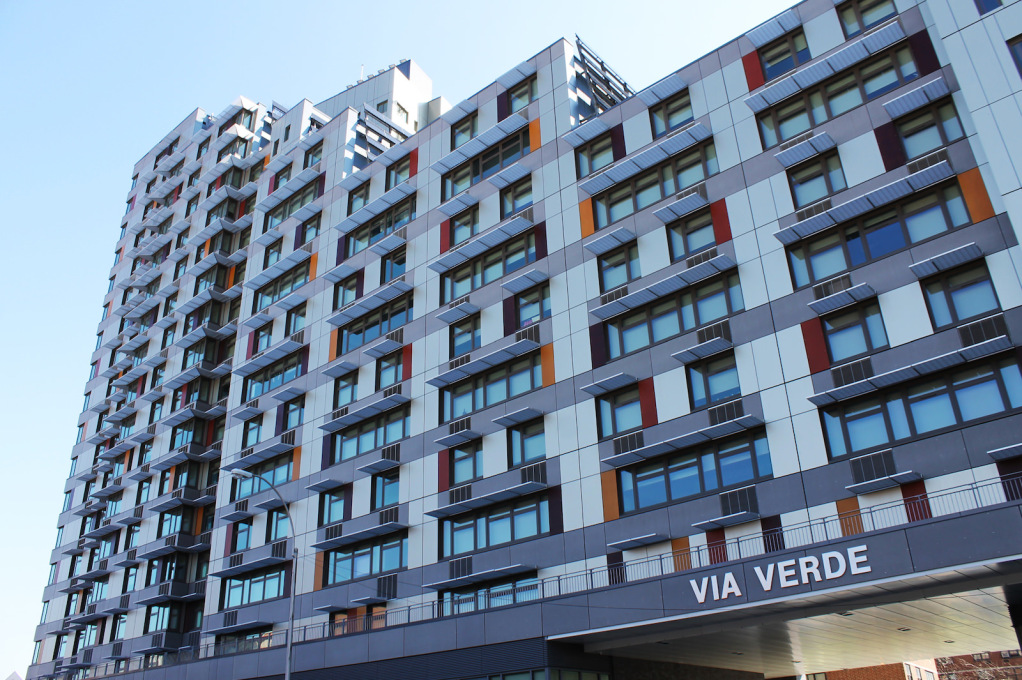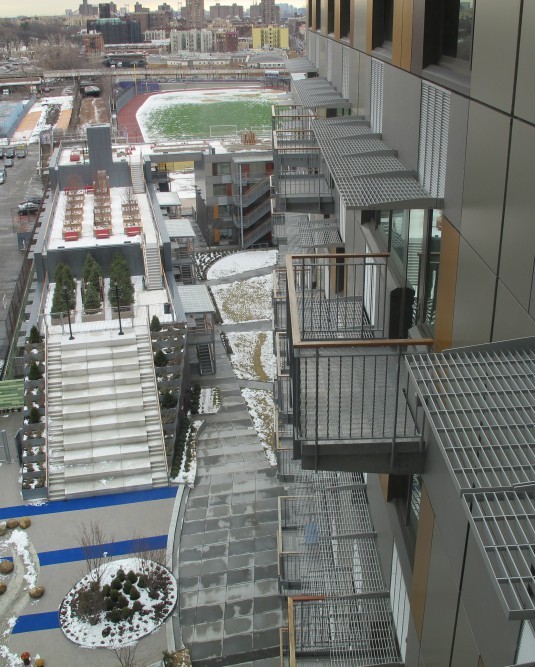Via Verde, or the “Green Way”, was completed two years ago in the South Bronx – and its ideal combination of affordable housing and eco-friendliness has seemingly so far delivered on its promises. David Bench revisited the successful site, asking why the city isn’t filled with more affordable housing schemes like it. Hint: the answer has to do with something green.
Affordable housing is the quest of every New Yorker. The routes to finding it are mysterious and widely misunderstood, as they are made up of a myriad of buildings, programmes, and rules that have failed to keep pace with the production of luxury housing and gentrification of middle class neighbourhoods in the city. This apartment anxiety has led to such amusing and fateful reactions as the creation of the Rent is Too Damn High political party – whose name speaks for itself – and an economic narrative that propelled Bill de Blasio from a long-shot mayoral candidacy to an overwhelming majority on election day in 2013. Soon after taking office, de Blasio unveiled the most ambitious affordable housing program in generations, which aims to build or preserve 200,000 units in the next decade.
With this new mandate on the books, it’s a good time to look back and assess one prominent example of affordable housing from recent years: Via Verde, a sustainable complex in the Bronx completed in the summer of 2012 by architects Dattner and Grimshaw. Via Verde was intended to be a model project: a shining example of what the South Bronx could do with its abundance of vacant sites.
And by any measure, it has been a success. The fully occupied building provides 222 affordable units and income diversity to the Melrose neighbourhood, with its 151 rental apartments for low-income tenants and 71 co-ops for purchase by middle-income households. The photovoltaic panels are working as intended: they collect enough solar energy to power the public spaces of the building, with production levels that are charted in the building lobby. And perhaps the most noteworthy feature is the occupiable green roofscape, which allows residents to move from the enclosed courtyard up along the stepped massing of the building to access greenroofs and raised planters. In its first year of operation, over 1000 pounds of food were produced by the community gardens – a remarkable demonstration of both active design and local food production.
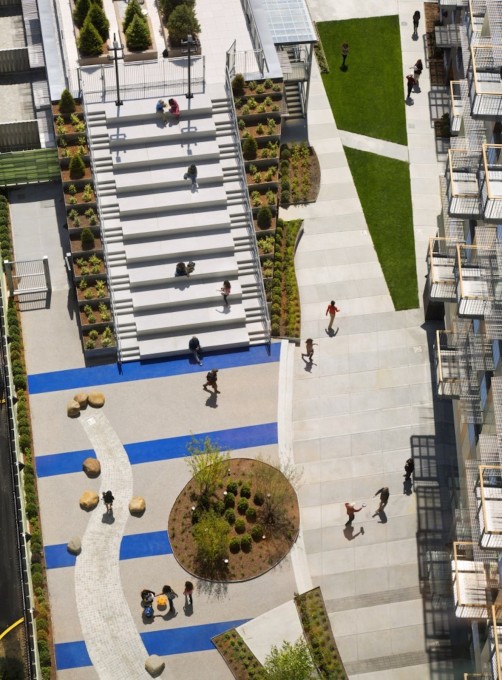
Frank Gehry once said, “Everybody likes buildings in construction better than we do finished”. He was right: it is almost always the process of building that we find fascinating rather than the building itself. (To quote an addendum to this that he recently made: “98 percent of what gets built and designed today is pure shit” anyway). But the reason the process is so interesting is that we can learn the most from a building in progress – and as much as Via Verde is a model for the formal and functional criteria that it has championed, it also demonstrates what it really takes to develop affordable housing as good architecture, amidst all the red tape, zoning laws, socio-economic stratification, and environmental situation in the city.
Via Verde was the result of a design competition – the first of its kind for a sustainable affordable housing project in New York and kicked off the Bloomberg administration’s own ambitious affordable housing push. The two-step jury process was overseen jointly by the New York Chapter of the American Institute of Architects (AIA) and the city’s Housing and Preservation Development (HPD) agency. The brief required an overtly “green” agenda incorporating active design guidelines on a difficult brownfield site where a gas station had once been.
The winning team was composed of a pair of developers, Phipps Houses and Jonathan Rose Companies, and a pair of architects, Grimshaw and Dattner. The composition of the team drew from each their relative strengths: Phipps is the largest affordable housing developer in the city with a breadth of experience, and Jonathan Rose focuses on environmental and social development. As for the architects, Grimshaw brought international sustainable design experience that matched well with the housing and zoning expertise of Dattner.
From start to finish, the necessary city agencies worked hard to make the project a reality, demonstrating the importance of public-private partnership. The Department of City Planning worked to get the project through rezoning in the infamously complicated Uniform Land Use Review (ULURP) process. An adjacent New York City Housing Authority (NYCHA) property provided easements to allow the building to be built with the proper massing, which allowed adequate area to include the courtyard. And HPD took a lead role in coordinating financing and shepherding the unique housing mix in the project, which includes both duplexes and townhouses. The team at Bright Power, an energy efficiency consulting firm, provided expertise in designing an efficient and effective PV array, and the environmental non-profit GrowNYC has effectively managed the rooftop community garden.
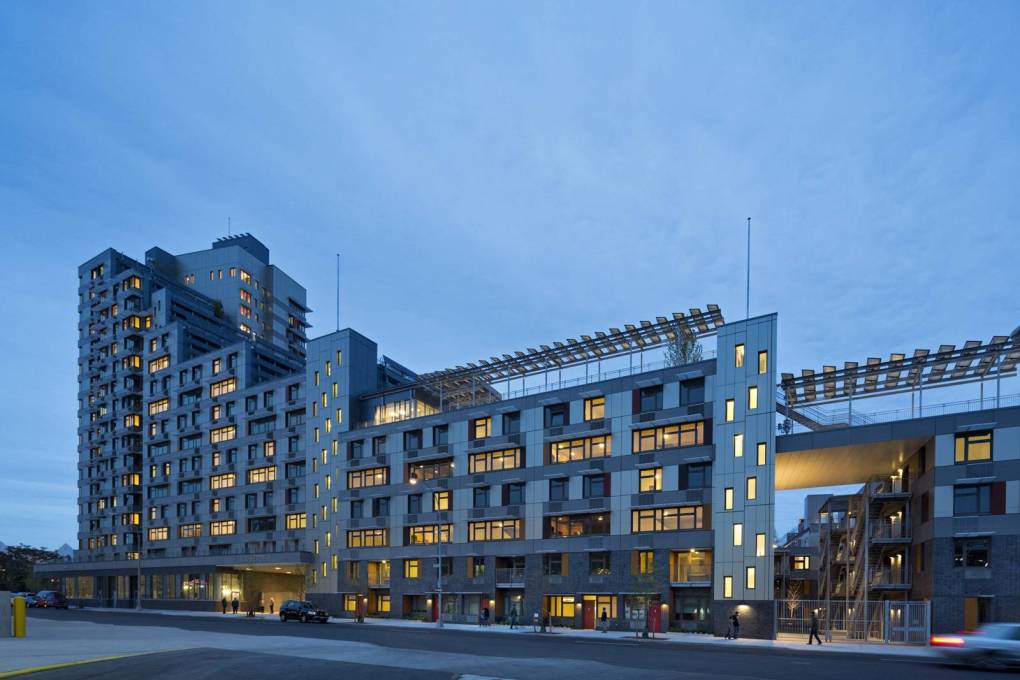
Via Verde is well-known as a successful synthesis of many sustainable design criteria, an emblem of agency coordination and follow-through. So why do we not have more of these projects filling our neighbourhoods? Because the “Green Way” is green in another sense – the greenback one: it’s an expensive affordable housing project. So much so that city agencies are tired of hearing about its success – it is a model in every way except the one that would make it repeatable: financially. This is not to blame the building or the design, it is simply a fact that developers know all too well. In a city with limited space and high demand, quality building is expensive. And with that, we get luxury condos.
Another push for affordable housing by a new administration with the same logistics will likely end up as successful as the last: resulting in a net loss of units as large mid-century housing complexes increasingly turn to market rate. Perhaps the de Blasio administration could consider something more bold, like tying together the cause and effect of the housing crises and instituting a tax or surcharge on the sale of property used as second homes and pied-à-terres, similar to the “mansion tax” that has been proposed in London. That way we could actually afford to build more projects like Via Verde.
- David Bench is a registered architect in New York State and works for Selldorf Architects and with the non-profit collaborative inca.org.
Architect Lee Weintraub has called Via Verde a “perfect storm”. See this short video by Urban Land Institute for more details about what made it possible:




